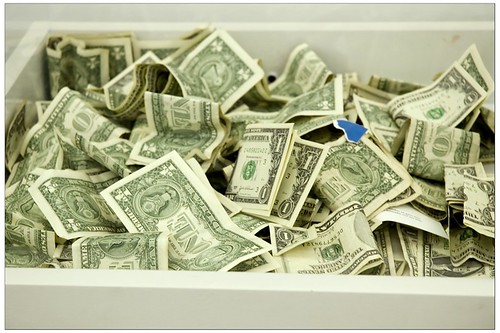Oh boy, more happy news as the snow flurries begin again.
Paul Krugman: The Big Meltdown
If we’re going to have a financial crisis, here’s how it will play out.The great market meltdown of 2007 began exactly a year ago, with a 9 percent fall in the Shanghai market, followed by a 416-point slide in the Dow. But as in the previous global financial crisis, which began with the devaluation of Thailand’s currency in the summer of 1997, it took many months before people realized how far the damage would spread.
At the start, all sorts of implausible explanations were offered for the drop in U.S. stock prices. It was, some said, the fault of Alan Greenspan, the former chairman of the Federal Reserve, as if his statement of the obvious — that the housing slump could possibly cause a recession — had been news to anyone. One Republican congressman blamed Representative John Murtha, claiming that his efforts to stop the “surge” in Iraq had somehow unnerved the markets.
Even blaming events in Shanghai for what happened in New York was foolish on its face, except to the extent that the slump in China — whose stock markets had a combined valuation of only about 5 percent of the U.S. markets’ valuation — served as a wake-up call for investors.
The truth is that efforts to pin the stock decline on any particular piece of news are a waste of time.
Wise analysts remember the classic study that Robert Shiller of Yale carried out during the market crash of Oct. 19, 1987. His conclusion? “No news story or rumor appearing on the 19th or over the preceding weekend was responsible.” In 2007, as in 1987, investors rushed for the exits not because of external events, but because they saw other investors doing the same.
What made the market so vulnerable to panic? It wasn’t so much a matter of irrational exuberance — although there was plenty of that, too — as it was a matter of irrational complacency.
After the bursting of the technology bubble of the 1990s failed to produce a global disaster, investors began to act as if nothing bad would ever happen again. Risk premiums — the extra return people demand when lending money to less than totally reliable borrowers — dwindled away.
For example, in the early years of the decade, high-yield corporate bonds (formerly known as junk bonds) were able to attract buyers only by offering interest rates eight to 10 percentage points higher than U.S. government bonds. By early 2007, that margin was down to little more than two percentage points.
For a while, growing complacency became a self-fulfilling prophecy. As the what-me-worry attitude spread, it became easier for questionable borrowers to roll over their debts, so default rates went down. Also, falling interest rates on risky bonds meant higher prices for those bonds, so those who owned such bonds experienced big capital gains, leading even more investors to conclude that risk was a thing of the past.
Sooner or later, however, reality was bound to intrude. By early 2007, the collapse of the U.S. housing boom had brought with it widespread defaults on subprime mortgages — loans to home buyers who fail to meet the strictest lending standards. Lenders insisted that this was an isolated problem, which wouldn’t spread to the rest of the market or to the real economy. But it did.
For a couple of months after the shock of Feb. 27, markets oscillated wildly, soaring on bits of apparent good news, then plunging again. But by late spring, it was clear that the self-reinforcing cycle of complacency had given way to a self-reinforcing cycle of anxiety.
There was still one big unknown: had large market players, hedge funds in particular, taken on so much leverage — borrowing to buy risky assets — that the falling prices of those assets would set off a chain reaction of defaults and bankruptcies? Now, as we survey the financial wreckage of a global recession, we know the answer.
In retrospect, the complacency of investors on the eve of the crisis seems puzzling. Why didn’t they see the risks?
Well, things always seem clearer with the benefit of hindsight. At the time, even pessimists were unsure of their ground. For example, Paul Krugman concluded a column published on March 2, 2007, which described how a financial meltdown might happen, by hedging his bets, declaring that: “I’m not saying that things will actually play out this way. But if we’re going to have a crisis, here’s how.”


love the redesign! and of course: krugman rox.